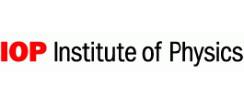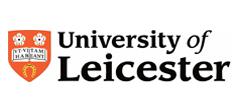Space: 11 to 14 year olds
This list is designed to link to suitable resources to use space as a context for teaching STEM subjects for 11 to 14 year olds.
Some of these resources require FREE registration with the STEM Learning website. Registration also gives you access to thousands of other quality assured STEM resources.
Rocket Science: Secondary Schools Resource Taster Pack
This taster resource looks at the hazards of radiation exposure in space travel by modelling mutation in seeds with Rabidops. They are imaginary plants made from midget gem sweets and cocktail sticks. Rabidops are loosely based on Arabidopsis, a plant used extensively in genetics research and also used in several space experiments looking at the effect of gravity on plant growth.
The Great British Space Dinner
The Great British Space Dinner Challenge contains nine lessons:
Lesson 1: All Aboard the International Space Station (ISS)
Lesson 2: Taking food into orbit
Lesson 3: Zero-G Biomechanics: blueprint construction
Activity on the skeletal and muscular system, with an emphasis on biomechanics.
Lesson 4: Biomechanics: prototype design
Can be used to teach forces and muscular-skeletal system simultaneously.
Lesson 5: (optional) As below, so above
A lesson to promote healthy eating and drinking, focusing on the Eatwell plate, relating this to meal planning for a space menu.
Lesson 6: A stacked plate: nutritional analysis
Lesson 7: Exercise and hydrate
Lesson 8/9: ISS dinner ready?
Students synthesise information collected so far and work in groups to creatively and independently design recipes for a space dinner menu.
Monitoring Health on the International Space Station
Two short video clips describe how aspects of Richard Garriottt's health were monitored during his visit to the International Space Station. The first video clip describes experiments into how back pain, motion sickness and bone structure can be affected by space travel. The second video explains how heart rate is monitored carefully during different phases of the mission.
Earth in Space 11-14
From the Institute of Physics, this resource provides extensive teacher guidance and suggested classroom activities to support the teaching of:
• Gravity and space
• Orbits and satellites
• The solar system and beyond
• Sun, Moon and Earth
Classroom Space
13 resources developed by the University of Leicester that cover topics such as global warming, heat transfer and life processes.
Teaching Astronomy and Space: Classroom Demonstrations
Classroom demonstrations from the Institute of Physics that cover:
• what makes a comet
• the Hertzsprung-Russell Diagram
• the colour and temperature of stars
• electromagnetic radiation
• why is the sky blue?
• orbits of planets and comets
• solar eclipses
• the phases of the moon
• light intensity and distance from the equator
• red and blue wavelength shift in light
The Hammer and the Feather on the Moon
A video clip of the famous experiment which shows that all objects fall at the same rate in the same gravitational field. This experiment can be simulated in the classroom with a feather and coin in a tube connected to a vacuum pump.
Galaxies *suitable for home teaching*
Looking at the Virgo cluster of galaxies, students will investigate what a galaxy is, what different types there are and how these galaxies are distributed within the cluster. By building a model of the cluster, students can investigate patterns relating to where the different types of galaxies are found, and form conclusions about how the cluster might have changed over time.








